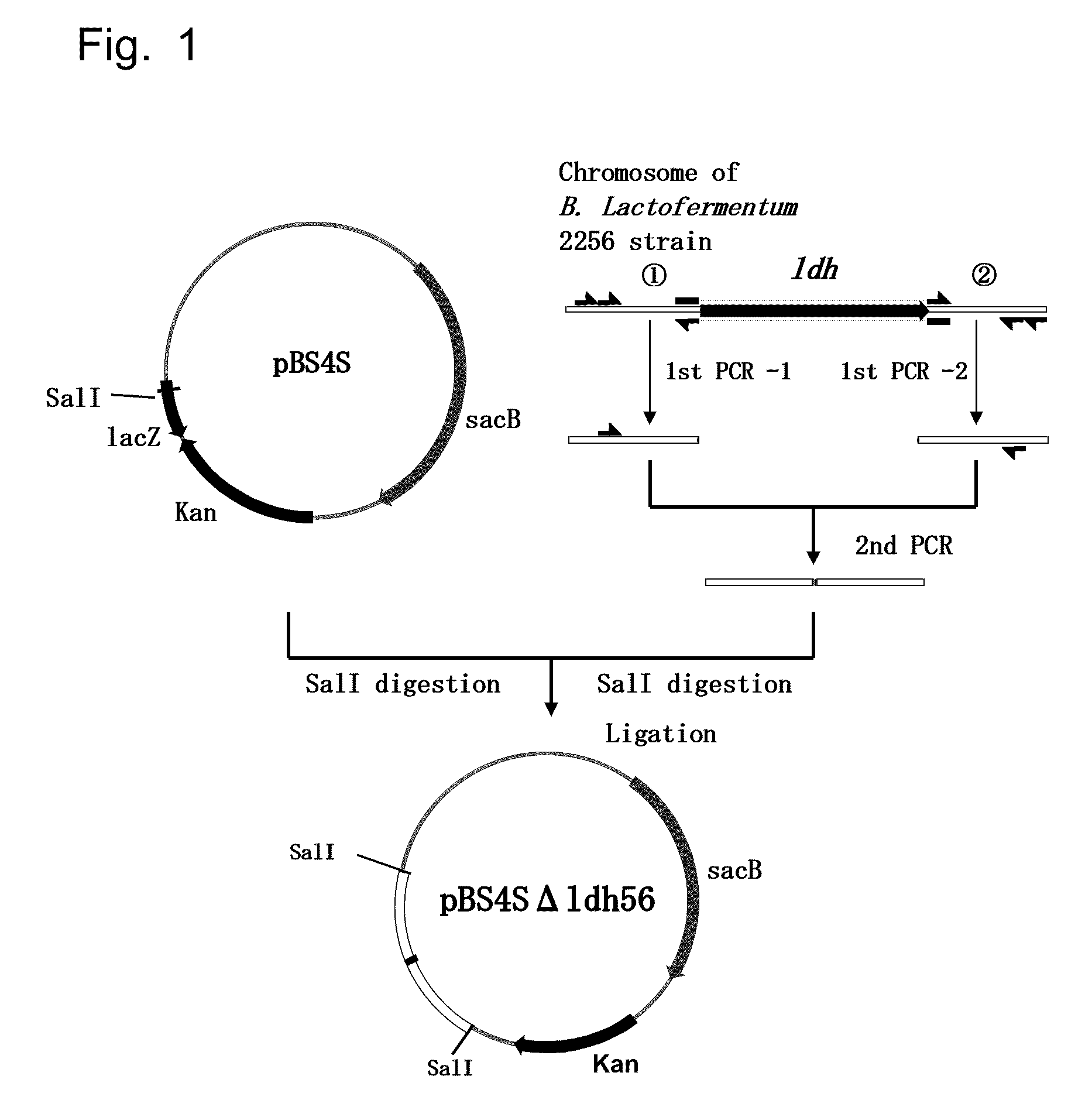Method for producing an organic acid
a technology of organic acid and production method, applied in the direction of fermentation, etc., can solve the problems of increased purification cost of isolating product, increased cost of culture medium, and inability to meet the needs of production,
- Summary
- Abstract
- Description
- Claims
- Application Information
AI Technical Summary
Benefits of technology
Problems solved by technology
Method used
Image
Examples
example 1
Construction of a Strain in which the sucE1 and mdh Genes have Been Enhanced
[0127]
[0128]An sucE1 gene fragment in which the native promoter is replaced with the thioredoxin reductase (TRR) promoter was obtained by crossover PCR using synthetic DNAs designed by referring to the nucleotide sequences around the TRR and the sucE1 gene of the genome sequence of Corynebacterium glutamicum ATCC 13032, which is publicly available (GenBank Database Accession No. NC—003450).
[0129]A sucE1 fragment containing the native promoter was amplified by PCR using the chromosome of Brevibacterium flavum MJ-233 as the template and the primers shown in SEQ ID NOS: 17 and 18. For PCR, Pyrobest DNA Polymerase (Takara Bio Inc.) was used, and the target PCR product was obtained by incubating at 94° for 3 minutes once, and then repeating a cycle of denaturation at 94° C. for 30 seconds, annealing at 60° C. for 30 seconds, and extension at 72° C. for 1 minute 30 times. The PCR product was treated with Sse8387I,...
example 2
Succinic Acid Production with the sucE1- and mdh-Amplified Strain
[0152]Using strains obtained by introducing each of pVK9, the plasmid for enhanced sucE1 gene alone (pVK9:PTRR-sucE1), the plasmid for enhanced mdh gene alone (pVK9:PEFTu-mdh), and the plasmid for enhanced sucE1 and mdh genes together (pVK9:PTRR-sucE1+PEFTu-mdh), into the Corynebacterium glutamicum AJ110655 strain, and the culture for succinic acid production was performed as follows. Cells of each strain obtained by culturing the strain on a CM-Dex plate medium were inoculated into 20 ml of a seed medium (25 g / L of glucose, 1.4 g / L of (NH4)2SO4, 0.5 g / L of KH2PO4, 0.5 g / L of K2HPO4, 0.5 g / L of MgSO4.7H2O, 4 g / L of urea, 0.02 g / L of FeSO4.7H2O, 0.02 g / L of MnSO4.7H2O, 200 μg / L of biotin, 200 μg / L of VB1.HCl, 1 g / L of yeast extract, 1 g / L of casamino acid, 25 mg / L of kanamycin), and cultured at 31.5° C. in a Sakaguchi flask under an aerobic conditions with shaking for about 5 hours (aerobic culture) or 16 hours (microae...
PUM
 Login to View More
Login to View More Abstract
Description
Claims
Application Information
 Login to View More
Login to View More - R&D
- Intellectual Property
- Life Sciences
- Materials
- Tech Scout
- Unparalleled Data Quality
- Higher Quality Content
- 60% Fewer Hallucinations
Browse by: Latest US Patents, China's latest patents, Technical Efficacy Thesaurus, Application Domain, Technology Topic, Popular Technical Reports.
© 2025 PatSnap. All rights reserved.Legal|Privacy policy|Modern Slavery Act Transparency Statement|Sitemap|About US| Contact US: help@patsnap.com

